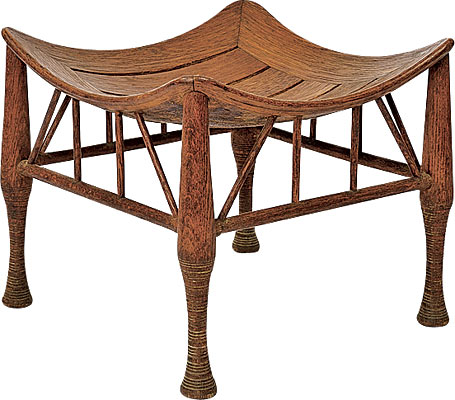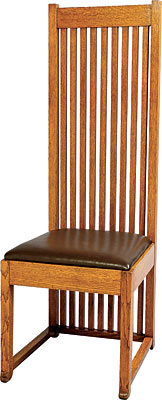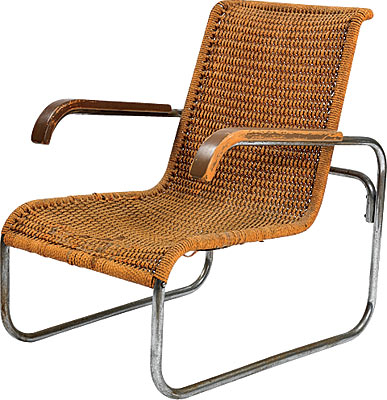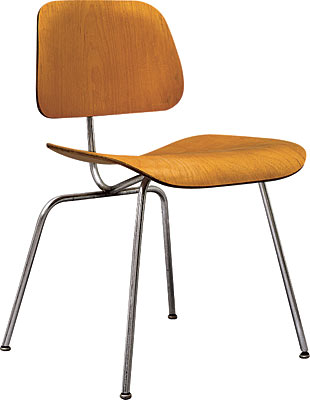The history of modern design is usually plotted as a straight line: a singular trajectory starting from the ubiquitous Viennese café chair. Accurate? Not exactly, according to Richard Born, the senior curator of Good Design in Europe and America, 1850–1950, an exhibition that opens July 8th at the Smart Museum of Art. “It all folds back on itself, sort of like a braid,” says Born. We examined his theory by studying four chairs and the designers’ influences on one another.

THE THEBES STOOL (late 19th century) Modeled on an ancient Egyptian form, this simple stool is presciently modern: The mystery artisan—likely a Brit—chose oak over ebony or exotic wood and resisted the Victorian inclination for lavish ornamentation. “The use of steamed and bent wooden planks for the seat also adds a note of modernity,” says Born.

FRANK LLOYD WRIGHT ROBIE HOUSE CHAIR (1908-10) Wright intended this commission, made of oak, to reflect the exterior of the Robie House—a concept he called the unified interior. “He eliminated all applied ornament in this spare design,” says Born, “relying instead on the natural qualities of the unpainted wood and the geometric precision of the chair’s exaggerated profile for decorative effect.”
Photography: (Robie chair) Phil Mrozinski, (Thebes stool) Tom Van Eynde
Credits: (All chairs) courtesy of Smart Museum of Art, University of Chicago (Thebes stool) late 19th century, gift of John Vinci, (Robie chair) circa 1909, George Mann Niedeckern, university transfer

BREUER CHAIR (circa 1929) This iconic lounge chair represents the same ideals as the Thebes stool and Robie Houses chair: lack of applied ornament and use of oak. But the Hungarian-born creator, Marcel Breuer—a student and later a teacher at the Bauhaus—rejected the concept that all elements had to be handcrafted. Instead, he employed machine-age chrome legs and production-line assembly techniques.

EAMES DINING CHAIR (1946) A classic example of midcentury modern design. The curved plywood features recall the Thebes stool, but the chair was made on an assembly line, similar to Breuer’s lounge chair. Says Born: “Unlike Wright’s early furniture designs, which were unique commissions, or Bauhaus designs, which were luxury items manufactured on a limited scale, this dining chair was fully affordable, mass produced, and marketed widely in America and Europe at the time.”
GO: SMART MUSEUM OF ART at the University of Chicago, 5550 S. Greenwood Ave.; 773-702-0200, smartmuseum.uchicago.edu
Photography: Tom Van Eynde
Credits: (All chairs) courtesy of Smart Museum of Art, University of Chicago (Eames chair) 1946, Charles and Ray Eames, gift of Mr. and Mrs. Ernest R. Frueh, (Breuer chair) circa 1929, Marcel Breuer, gift of E. L. Menger


